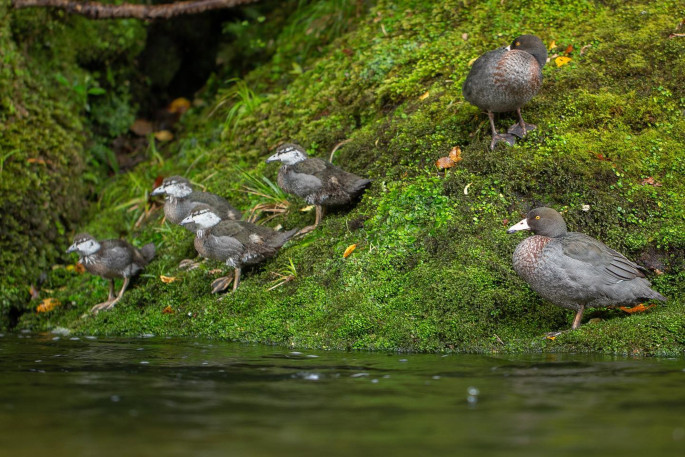A conservation group working in the Eastern Bay of Plenty is producing positive results with the population of one of New Zealand's iconic birds, but also has a stark warning for the future.
Eastern Whio Link is committed to protecting the Whio/blue duck in the Waioeka Gorge and wider Eastern Bay of Plenty area.
Whilst the Whio graces New Zealand's $10 notes this taonga (treasured) species has suffered a marked drop in numbers.
It was enough to spring ecologist and project coordinator Sam Gibson into action. The project only started in July 2020 but has made massive strides.
'We're real fresh but we've got some real skilled people on board who've got experience from different parts of the country who hunt this area. We kind of got our heads together and said: ‘wait yeah we can give this a nudge'.
Whilst there are several reasons behind this endemic species' demise, predation by stoats remains the biggest threat.
The way to combat catastrophic loss is through trapping. The majority of volunteers that come on board with Sam are hunters and fishermen which has helped provide an efficient impact.
'Our volunteer base is mostly people that use the backcountry. They're connected to the area. It's real easy when you've got people that are really switched on in the bush.”
A recent sponsorship drive for Christmas saw Eastern Whio Link hunt for donations with a certificate on offer as a stocking filler in exchange. The group is however still looking for donations.
'Pretty much we need funding. We've got a bunch of it and have had a bunch of it. But we are growing beyond, growing faster than we anticipated.”
The fruits of the group's labour was clearly evident by the presence of multiple chicks on the Upper Waioeka in October for the opening weekend of trout fishing.
'At the moment we've got rivers with one or two pairs of Whio in and none of them are giving chicks away,” Sam states proudly. But the ultimate goal is more ambitious.
'We've got a series of projects up the coast which is allowing those Whio to breed and connecting up those genetics.”
Sam shares a stark warning about the future of this endemic bird. With climate change predicted to increase flooding of breeding grounds there is an existential risk to this iconic waterfowl.
'Big picture! With NIWA's 90 year forecast on weather, we will get more and more flooding and for our Whio to survive that we're going to need a significant amount of genetic diversity. At the moment we are just facing genetic poverty.”

